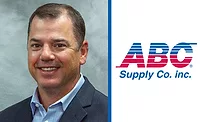Q&A: The State of Spray Foam 2020
The Sprayfoam Roofing Industry Celebrates its Largest Expo in Pasadena

The Sprayfoam Show 2020 kicks of Tuesday in Pasadena, Calif., and just coming off of the heels of another successful International Roofing Expo, there’s a lot of momentum surrounding the roofing industry. RC recently caught up with BIOFOAM Founder and President Tiffiny Flaim, the first female to serve as president of the Spray Polyurethane Foam Alliance (SPFA) about the state of the growing spray foam movement.
RC: When and why did you decide to take a leadership role in the SPFA?
T.F.: I entered into SPFA’s leadership when I was asked, essentially. Because of the time I was spending volunteering, the organization’s recruiters felt I was a good match for leadership. I also wanted to surround myself with other leaders and absorb some of their knowledge. To be able to do that, you need to be in the same room and sitting at the same table. Whenever someone asked me to do something, I always said yes. For the executive board, however, I took a moment to decide if I’d say yes. I wanted to make sure I had the skills and knowledge to be a leader in that capacity.
RC: Why do you feel it’s the right time, right now, for you to be leading the SPFA as an entrepreneur and as a woman?
T.F.: Well, I believe the Equal Pay movements has helped to highlight the lack of women in leadership positions. However, I will say that being a part of the SPFA, I never felt like a minority. No one ever made me feel I didn’t belong. But in terms of timing, I think everything lined up. I was volunteering and the path to the position opened. I believe my volunteering and participation opened the door for me and simultaneously there was more consideration for women in the industry to be leaders. I have been a leader in everything I have done, ever since I was a child. This experience leading the SPFA is thus nothing different for me, it’s just a new group of people.
RC: What are you most proud of accomplishing in your leadership role with the SPFA?
T.F.: I still haven’t accomplished everything I have wanted to with the SPFA. One thing I have learned is how much time it takes to enact change. But what I’m most proud of is that I believe I have helped changed the culture of the executive team. I ask a lot of questions and want to hear a lot of opinions. In a sense, as a leader of the SPFA, I have become an interviewer. I have tried to create a culture where everyone can share their viewpoints and ideas and feel valued. I believe I have put the next group of leaders in the right position to succeed after me. I have created a map essentially to be passed down and that will keep momentum going. I’ve done this, in part, by making sure we are all in alignment about where the organization should go. I believe we all have the same vision.
RC: What has surprised you about your tenure with the SPFA?
T.F.: How much time it takes to initiate change. The SPFA is a national organization, different parts of the country have significantly different challenges, issues I may not encounter in my own area. I’ve had to set aside my own personal agenda and focus on the issues of the needs of the current members.
RC: What doesn’t the rest of the roofing contractor industry know about spray foam systems that they should?
T.F.: Spray foam roofs can be saved. Don’t tear the SPF roof off without calling us first. Don’t make that decision unless you are a foam roof expert. We can help you help your client. We like to work with other roofing contractors, we handle the foam they handle everything else. It’s their customer, we work for the roofing contractor. A spray foam roof should be the last roof system installed on a building. Most spray foam roofs will outlive all of us potentially, if cared for properly.
RC: Is now the ideal time for contractors to be in the spray foam business?
T.F.: I don’t think there is a best or worst time. The real question is, “Is spray foam the right business for you?” You must train yourself and your employees and take good care of your equipment, there’s a lot of expensive machinery maintenance required to ensure you are installing the product properly for peak performance and safety. If you aren’t committed to all these things, then this isn’t the right business for you. Spray foam isn’t for everyone. If it’s not right for you, partner with an experienced local spray foam contractor and have them do the portion of work you don’t.
RC: What would you say is the future of the SPFA and the spray foam market?
T.F.: There is so much opportunity with spray foam. It’s mainly just a matter of people using the product to its full capacity. Rarely do you see a building or facility using spray foam throughout the full building envelope. As for the SPFA, the organization is poised to continue its role as the voice and technical resource for the industry and spray foam’s complete value chain. Expect the organization to continue to advocate and educate on energy efficiency and roofing performance, safe and best installation practices, the importance of certification and much more.
RC: Do you believe there will be a trend toward spray foam being applied throughout the envelope?
T.F.: Yes, I do. There are not many products that can achieve today’s required standards like spray foam can. SPF can be the thermal layer, the vapor retarder, air barrier, and the weather barrier/rain screen all in one application!
RC: Why is certification a priority emphasis for the SPFA? Is that the key toward getting more roofers trained or involved in spray foam?
T.F.: I think so. To be the best at your trade, you need to invest in ongoing training and certification. And the SPFA offers the most advanced certification available.
RC: When did you ever feel under-estimated in the roofing business, and how did you overcome that?
T.F.: Sometimes women tend to under value their strengths and knowledge. So, some of those wounds are self-inflicted. However, I did have an experience where I had sent a follow-up email to someone and it had my signature and title on it. And the man responded in a derogatory way with a snide, sarcastic comment about my title. It was in writing and very odd. But, generally speaking, if you are knowledgeable and bring value to the conversation, men are going to welcome that. And women want to solve problems, which is an asset in roofing.
RC: What are the challenges of being a woman in leadership in an organization in such a specialized field?
T.F.: I don’t believe the challenges are specific to women. For me, the challenges have more to do with a desire to do great things while being limited by time or a particular budget. This is true for both business and personal aspirations. There’s always a defined amount of money coming in, you must work within your budget or find another means for revenue. You can’t, or shouldn’t, spend more than what is coming in.
RC: What do you think is a good way for the industry to get more women interested in, and into a career, in roofing?
T.F.: Encouragement and exposure to the career opportunities. Bringing trade classes back to high school, having college counselors set up tours of trade schools. Celebrate the commitments to the trades, the same way they do for universities. It’s important for the next generation to connect hand skills as a viable opportunity to supporting themselves. This is just as important for young men. Construction jobs cannot be exported. The trades should not be a backup plan, it should be a career pursued.
Looking for a reprint of this article?
From high-res PDFs to custom plaques, order your copy today!






